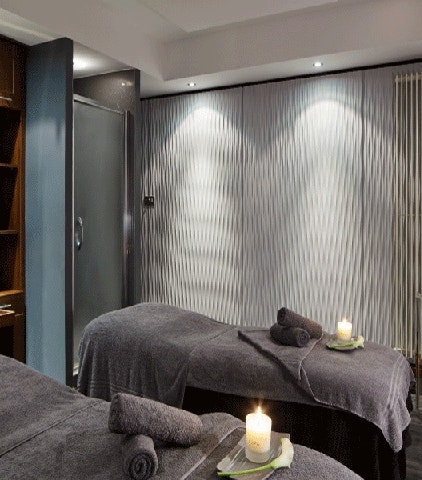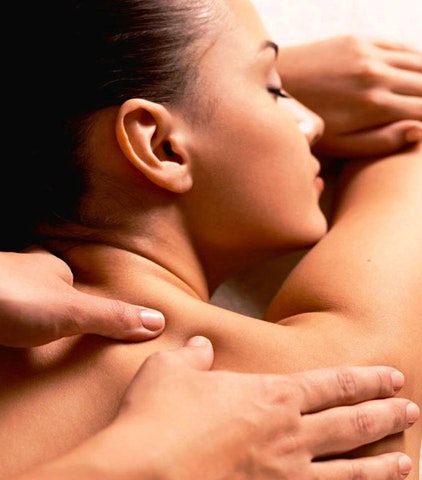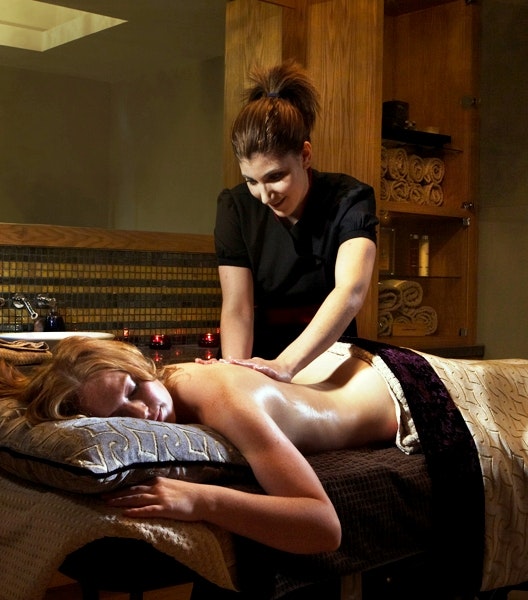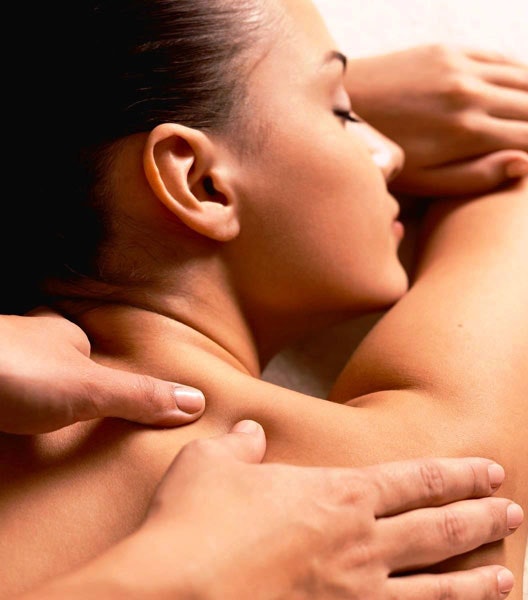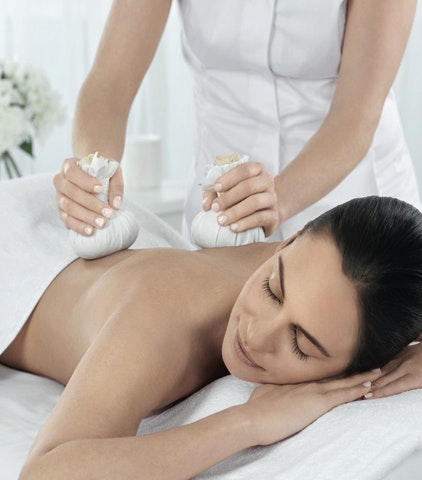
Spa Manicure Treatments
It is said you can tell a lot about a person by simply looking at their hands. Unfortunately, few of us can find the time to regularly address unruly cuticles or to keep our hands properly moisturised. And of course, there are those who struggle with the habit of nail biting.
Thankfully, a luxurious spa manicure can improve the appearance and feel of hands and nails which are in less than perfect condition, as well as enhancing those which are already well maintained. A manicure is also ideal for ensuring your hands look their best for special occasions, such as a wedding or holiday.
In this guide, we cover the different types of manicure treatments available and what you can expect during your spa treatment. You will also find some aftercare advice and the answers to a few manicure FAQs.
What is a spa manicure?
A manicure is a popular beauty treatment designed to improve - or maintain - the appearance and condition of hands and nails. Different tools, massage techniques and beauty lotions are used depending on the type of manicure treatment and spa venue chosen.
Nearly all manicures comprise a moisturising skin treatment, as well as cuticle neatening, nail filing and the application of one or more polishes. Generally speaking, the longer your manicure appointment, the more maintenance and pampering you can expect from your treatment.
Manicures can be booked as a standalone treatment or may be included as part of a spa day or spa break package.
Types of manicure treatments
There is a wide range of manicure treatments available across our 500+ spas. Techniques will vary depending on the treatment chosen. Here are a few of the most popular types of spa manicure treatment:
American manicure
American manicures involve the nails being shaped to match each fingertip for a rounded, natural look. Varnish resembling a French polish is often used but with the tips painted a less stark shade of white.
File and polish
During the file and polish, the nails are filed to the guest’s preferred shape, before polish is applied in a colour of their choice. In a file and polish treatment, hands and nails are not pampered to the degree they are during a full manicure.
French manicure
A French manicure is a classic spa treatment! The French polish is what makes this treatment unique. Pink, beige or otherwise neutrally painted ‘squoval’ nails are tipped white for a preened aesthetic. Perfect for any occasion or everyday wear.
Gel polish manicure
A gel polish manicure sees a special chip-resistant ‘gel’ varnish applied to the nails, which dries much more quickly and lasts far longer than standard nail polish. Gel polishes are often set using a UV light. This is a great option for those wanting to experience an indulgent manicure with lasting results.
Hot stone manicure
Tired hands can benefit from a soothing massage and the hot stone therapy used as part of this indulgent and increasingly popular treatment.
Paraffin wax manicure
This treatment consists of a warm paraffin wax being applied to the hands and nails as part of a softening, moisturising and condition-boosting manicure. Paraffin wax treatments are often available separately from full manicure treatments too (enquire with your selected spa).
Mini manicure
This is the name sometimes applied to file and polish treatments, but it is also used to describe an express manicure. Whilst this doesn’t provide the full luxury of experiencing a full manicure, the treatment can be great for those in need of some TLC and those who don’t have as much time to spare!
Be sure to ask us for advice when you book if you are unsure what is - or isn’t - included in your chosen manicure.
What to expect during a spa manicure treatment
A spa manicure treatment may vary depending on the spa you are visiting and the type of manicure you have chosen. However, you can typically expect the following during your treatment:
While procedures and practices vary, you can typically expect the following during your manicure treatment:
STEP #1 - Cut, file and shape: Nail filing is often first on a manicurist’s agenda. Keratin in the nails weakens when they become wet or moist, causing split layers and jagged edges if filed. Your spa therapist should ask whether you would prefer square or round nails. They will then get to work, trimming and filing each of your nails into an attractive and uniform shape.
STEP #2 - Cleanse and soak: Your hands will then be soaked and cleansed in warm water, in order to soften and prep the skin. Some spas may provide a massage chair for guests to sit in at this stage, and/or some reading material if desired. A nail brush may be used to get rid of any debris trapped under your nails. An exfoliating cream may be massaged into your hands and forearms to remove dead skin cells and make them softer.
STEP #3 - Cuticle care: Once your hands have been towel-dried, your therapist will apply a cuticle cream to your fingernails and gently push each cuticle back, creating a neat aesthetic. You may be asked to soak one hand in warm water while the spa therapist works on the other. This softens your cuticles and makes them easier to manipulate.
STEP #4 - Moisturise and massage: You’ll then receive a pampering hand massage comprising reflexology techniques designed to help you relax.
STEP #5 - Polish application: The final step is nail polish application. Your chosen colour will be applied between a base coat and a top coat, to increase its durability and to protect your nails. You may be asked to hold your hands under a UV lamp once painted, which will help the nail polish to dry more rapidly.
A number of other skin/nail conditioning or strengthening products may also be applied at various stages of your manicure.
IMPORTANT: Inclusions and procedures vary between different manicures and spa venues. Always check the website of your selected spa to determine exactly what you can expect from your chosen treatment. Or ask us when you book through our spa experts.
Spa manicure aftercare
There are a few things you can do to help prolong the results of your perfect manicure and keep your hands looking and feeling beautiful for longer:
Avoid strenuous use of your hands for up to 12 hours following your manicure, so as not to chip or dent the applied polish.
Try to wear rubber gloves whenever your hands are in contact with water or household chemicals to keep your nails looking great for as long as possible.
Nail biters should resist the temptation to nibble!
Consider purchasing full-size or trial-size versions of the products used during your manicure so that you can maintain your soft hands and immaculate nails when you return home.
FAQs
How long does a manicure take?
The usual treatment time is usually between 30 and 60 minutes. The file and polish is shorter, around 15 minutes.
Are manicures good for you?
Yes, a manicure works to promote the growth of new skin cells by removing dead ones. They can also encourage blood flow. In addition, the treatment itself is soothing and allows for some much-needed downtime.
However, if you have an infection from a broken hangnail, or you happen to have a fungal skin problem, you should inform the spa ahead of your visit to avoid any potential disappointment on the day. Some spas will refuse to treat clients with these conditions.
How often should I get a manicure?
Every two to three weeks is recommended. However, you don’t have to splash out on a full manicure on a regular basis. An express manicure or file and polish can help keep your nails looking their best year-round, as can taking day-to-day steps to protect your hands.
With gel manicures, it is important to have the polish professionally removed after a maximum of two weeks and to take breaks of eight weeks or so between treatments to avoid damage to your nails.
How long does a manicure last?
That really depends on how well you look after your hands and nails, post-treatment. Follow our aftercare advice and your manicure should look good between treatments.
Should men get manicures?
Yes, of course! It is equally important for men to take care of their hands and nails. Some men’s spa packages even offer a manicure as one of the treatment options. A men’s manicure is likely to feature a hand soak, nail trim and file, cuticle tidying and hand exfoliation.
Can I wear nail varnish to my spa manicure?
You should arrive for your manicure with bare nails. The therapist will be happy to remove any existing nail polish, however this will cut into your treatment time. You must also arrive promptly to avoid your appointment being cut short or cancelled.
I bite my nails / my nails are very short. Can I still enjoy a manicure?
Spa therapists and nail technicians are used to working on nails of all lengths, so even nail biters can enjoy a manicure. In fact, a well-executed manicure can be the ideal encouragement for you to take greater care of your nails in the future and to give up the habit of nibbling for good!
It is important to note that French and American manicures and polishes are often not possible on very short nails, due to the placement of the white tips (check with us or your chosen venue if you are unsure whether these treatments will be suitable for you).
If you’d like to give the gift of a manicure, why not check out our spa vouchers page? Manicures and polishes are widely available as part of a selection of treatment packages. They make a great gift for family and friends.
